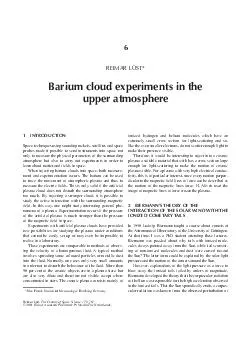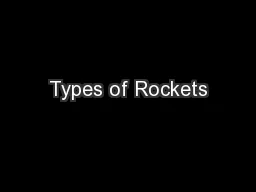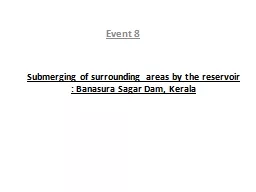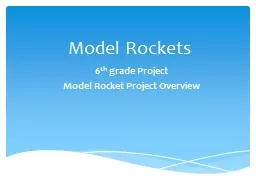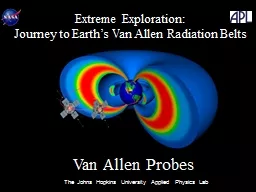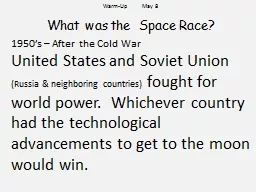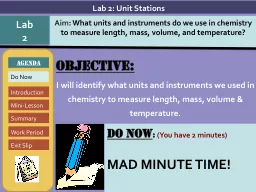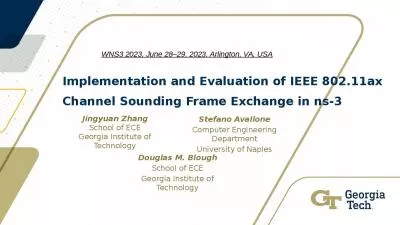PDF-INTRODUCTION Space techniques using sounding rockets satellites and space probes made
Author : trish-goza | Published Date : 2014-12-22
When injecting barium clouds into space both measure ment and experimentation occurs The barium can be used to trace the movement of atmospheric plasma and thus
Presentation Embed Code
Download Presentation
Download Presentation The PPT/PDF document "INTRODUCTION Space techniques using soun..." is the property of its rightful owner. Permission is granted to download and print the materials on this website for personal, non-commercial use only, and to display it on your personal computer provided you do not modify the materials and that you retain all copyright notices contained in the materials. By downloading content from our website, you accept the terms of this agreement.
INTRODUCTION Space techniques using sounding rockets satellites and space probes made: Transcript
Download Rules Of Document
"INTRODUCTION Space techniques using sounding rockets satellites and space probes made"The content belongs to its owner. You may download and print it for personal use, without modification, and keep all copyright notices. By downloading, you agree to these terms.
Related Documents

